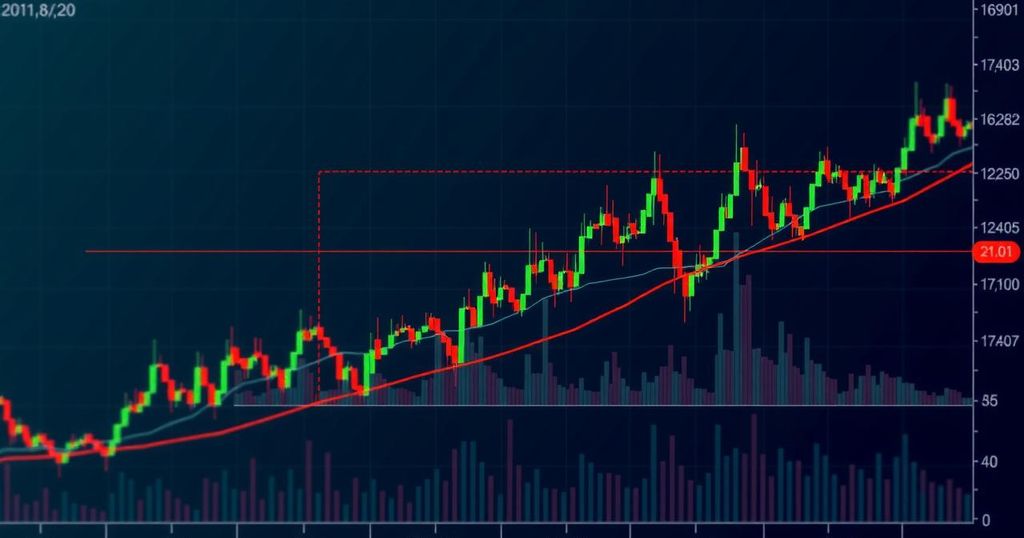Ethereum Faces Significant Challenges as Technical and Fundamental Weaknesses Emerge
Ethereum’s price has increased by less than 20% in 2024, significantly lagging behind Bitcoin’s more than 50% rise. Technical indicators show concerning patterns, such as a double top, a death cross, and a bearish pennant. Fundamental challenges include poor ETF inflow performance and intense competition from other blockchains like Solana. These factors contribute to a bearish outlook for Ethereum’s price.
Ethereum, the second-largest cryptocurrency, is facing troubling signals as it continues to struggle against Bitcoin’s substantial growth this year. As of 2024, Ethereum’s price has increased by less than 20%, in stark contrast to Bitcoin’s impressive rise of over 50%. Technical analysis reveals concerning patterns, including the formation of a double top at around $4,000, followed by a drop below the neckline at $2,824, which indicates a bearish breakout. Additionally, Ethereum has generated a death cross pattern on the weekly chart, with the 200-day and 50-day Hull Moving Averages intersecting in a bearish signal. Historically, the last occurrence of a death cross in March 2022 resulted in Ethereum’s price plummeting by over 70%. Moreover, a bearish pennant has also emerged, characterized by a long vertical decline followed by a symmetrical triangle, suggesting an impending bearish breakout. This turmoil coincides with the asset’s consolidation at the 50% Fibonacci Retracement level, heightening the likelihood of a significant price drop, potentially targeting $2,111, its lowest mark recorded on August 5. On the fundamental side, Ethereum faces considerable challenges. The Ether exchange-traded funds (ETFs) have not attracted strong inflows, resulting in cumulative outflows exceeding $530 million due to the Grayscale Ethereum Fund. In contrast, Bitcoin ETFs have garnered over $20 billion in inflows, underscoring a stronger institutional appetite for Bitcoin compared to Ethereum. Furthermore, Ethereum is encountering fierce competition in sectors such as decentralized finance (DeFi) and non-fungible tokens (NFTs), with competitors like Solana surpassing Ethereum in decentralized exchange (DEX) volume recently. Market data reveals that Solana handled approximately $10.87 billion in DEX volume within one week, compared to Ethereum’s $9.69 billion. The growing popularity of Solana meme coins has driven much of this activity. At the same time, notable Ethereum stakeholders, including Vitalik Buterin and the Ethereum Foundation, have recently divested thousands of Ether, which may further exacerbate market sentiment. Given the interplay of troubling technical indicators and disappointing fundamental performance, Ethereum may continue to experience downward pressure in the foreseeable future.
Ethereum, launched in 2015, is a decentralized platform enabling developers to build and deploy smart contracts and applications. It is the second-largest cryptocurrency by market capitalization, following Bitcoin. Ethereum has historically played a dominant role in areas like decentralized finance (DeFi) and non-fungible tokens (NFTs), attracting users and developers alike. However, competition from emerging blockchains, particularly layer-1 and layer-2 solutions, has intensified, leading to challenges in maintaining its leadership position. The performance of Ethereum has been closely tied to market trends, institutional adoption, and technical developments within the cryptocurrency ecosystem, making it susceptible to volatility and shifts in investor sentiment.
In conclusion, Ethereum’s current landscape presents a worrying picture marked by underperformance relative to Bitcoin, the emergence of bearish technical formations, and fundamental shortcomings reflected in ETF inflows. The competition from platforms like Solana is intensifying, further complicating Ethereum’s market position. As both fundamental and technical indicators lean towards weakness, Ethereum may face significant challenges that could result in further price declines.
Original Source: crypto.news








Post Comment